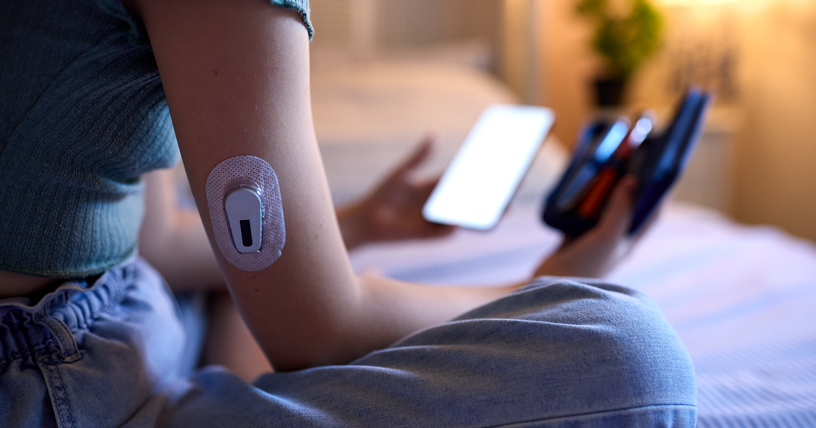Glucose monitors, also known as blood sugar monitors, have revolutionized the way people with diabetes manage their condition. By offering real-time feedback on blood sugar levels, these devices empower individuals to make informed decisions about their health. Whether you're newly diagnosed with diabetes or have been living with it for years, understanding glucose monitors can significantly enhance your management routine.

Types of Glucose Monitors
There are two main types of glucose monitors: traditional blood glucose monitors and continuous glucose monitors (CGMs). Traditional monitors require users to manually test their blood sugar by pricking their finger to obtain a blood sample. This blood is placed on a test strip that is inserted into the monitor, which then reads the glucose level.
On the other hand, CGMs provide real-time glucose readings throughout the day and night without the need for constant finger pricking. These devices use a sensor inserted under the skin that measures interstitial fluid glucose levels. The data is then sent to a handheld reader, smartphone, or insulin pump. CGMs are gaining popularity due to their ability to track trends and fluctuations, which can offer deeper insights into glucose patterns.
How Glucose Monitors Work
Traditional glucose monitors measure blood glucose levels by analyzing a small sample of blood. The test strip contains enzymes that react with the glucose in the blood, producing an electric current. The monitor then calculates the concentration of glucose based on the strength of the current. This method is quick and generally takes less than 15 seconds to provide a result.
CGMs, on the other hand, use a small sensor inserted under the skin, usually in the abdomen or upper arm. The sensor measures the glucose levels in the interstitial fluid, which surrounds the cells of the body. Every few minutes, the sensor sends data to a receiver or app, which displays current glucose levels and trends. These systems can provide alerts if blood sugar levels are too high or too low, making them invaluable tools for preventing dangerous fluctuations.
Benefits of Using Glucose Monitors
One of the most significant benefits of using a glucose monitor is the ability to closely track your blood sugar levels. For people with diabetes, maintaining glucose within a target range is crucial to preventing complications. With regular monitoring, individuals can identify patterns and adjust their diet, physical activity, or medications accordingly.
CGMs offer additional advantages by providing continuous data, which helps users see how factors like food, exercise, stress, and sleep affect their glucose levels in real time. This allows for more precise adjustments and can improve overall glycemic control. Moreover, many CGMs come with alarms to alert users of impending highs or lows, adding an extra layer of safety.
Choosing the Right Glucose Monitor
When choosing a glucose monitor, it's important to consider your individual needs and lifestyle. Traditional glucose monitors may be more cost-effective and simpler to use, especially for those who are comfortable with periodic testing. They are also widely available and can provide accurate readings when used correctly.
For those looking for more comprehensive monitoring, CGMs offer a range of features that go beyond simple glucose readings. They allow for constant tracking without the need for frequent finger pricks, which can be particularly beneficial for those who need to monitor their glucose levels more closely. However, CGMs tend to be more expensive, and some require a prescription. It's important to weigh the costs against the benefits when making a decision.
Limitations and Considerations
Despite their many benefits, glucose monitors are not without limitations. Traditional monitors require finger-pricking, which can be uncomfortable over time, especially for people who need to check their levels multiple times a day. Test strips and lancets can also add up in cost.
CGMs, while less invasive day-to-day, still require sensor changes every 7 to 14 days. The sensors can also be prone to inaccuracies, particularly when glucose levels are changing rapidly. Users should be aware that while CGMs provide valuable trends and insights, their readings may sometimes lag behind actual blood glucose levels, necessitating occasional finger-stick calibration.
Managing Diabetes with Glucose Monitoring
Glucose monitoring plays a vital role in the management of diabetes. It provides the feedback necessary for adjusting insulin, medications, and lifestyle factors such as diet and exercise. For people on insulin therapy, frequent glucose monitoring can help prevent hypoglycemia or hyperglycemia, both of which can have severe consequences if left unchecked.
For individuals with Type 1 diabetes, CGMs can be life-saving tools by providing real-time data and alerts when glucose levels become dangerously low or high. In contrast, those with Type 2 diabetes who are not on insulin may not need to monitor as frequently, but the data provided by regular monitoring can still be invaluable in managing the disease through diet, exercise, and oral medications.
The Future of Glucose Monitoring
The field of glucose monitoring continues to advance, with developments in non-invasive glucose monitoring technology on the horizon. Several companies are researching methods to measure blood glucose without breaking the skin, which could make managing diabetes even easier and more comfortable. Smartwatches and other wearable devices may soon integrate glucose monitoring, allowing for seamless, continuous tracking that fits into everyday life.
Additionally, artificial intelligence (AI) is playing a growing role in glucose monitoring. Some CGMs already use algorithms to predict glucose trends and suggest preventive actions, while future devices may offer even more sophisticated insights.
>Conclusion
Glucose monitors have transformed diabetes care by providing users with critical information about their blood sugar levels. Whether you choose a traditional monitor or a continuous glucose monitor, the key to successful diabetes management lies in regular and accurate glucose monitoring. With the ongoing advancements in technology, the future of glucose monitoring holds even more promise, helping individuals with diabetes live healthier and more informed lives.

